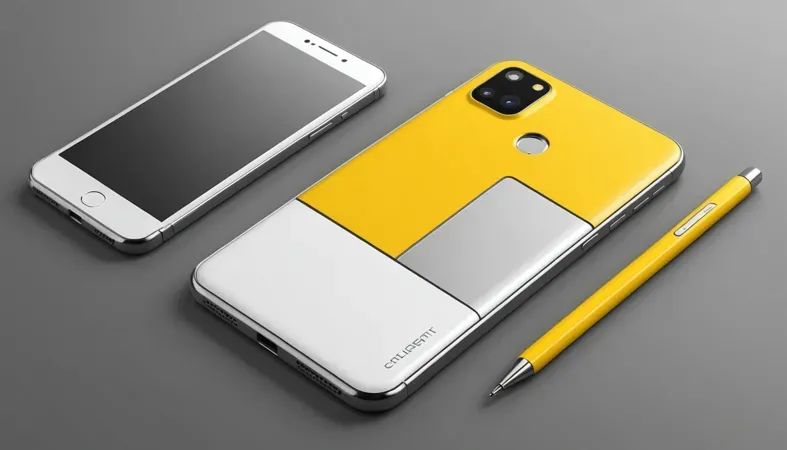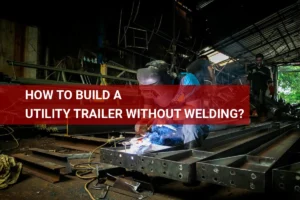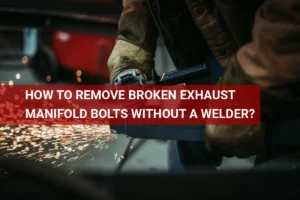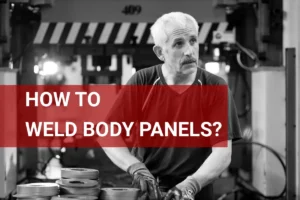How to Fill Holes in Car Body Without Welding?
Published on: April 5, 2025 | Last modified: March 4, 2025
By: Mark Carter
It’s a question that often arises: how to fill holes in car body without welding? It’s important to know how to tackle this, so your car stays safe and looks great. I’ve faced this issue myself when fixing up older cars, and getting it right can save you time and money.
In this article, we’ll cover types of car body holes, necessary materials, steps to fill with ease, precautions to take, recommended fillers, and common problems to watch for. We’ll also discuss why this is worth it and share some use cases. This guide will help you master how to fill holes in metal without welding effectively and efficiently.
Contents
- How to Fill Holes in Car Body Without Welding?
- What Are Car Body Holes?
- Types Of Car Body Holes
- Prerequisites
- Steps for Filling Holes in Car Body Without Welding
- Precautions
- Types Of Fillers to Use for Car Body Holes
- Factors Affecting Filling Holes in Car Body
- Common Issues
- Aftercare, Inspection, and Advanced Tips
- Advanced Techniques for Filling Holes in Car Body Without Welding
- Why This is Worth It: Advantages
- Use Cases Of Filling Car Body Holes
- Alternatives That Might Work Better
- Frequently Asked Questions (FAQs)
- Wrap-up
- References
How to Fill Holes in Car Body Without Welding?
Car body holes are gaps or damage in the vehicle’s shell. To fill holes in car body without welding, use fiberglass or body filler; apply layers, sand smooth, and paint. This method is easy, typically for DIYers, not requiring welding skills.
What Are Car Body Holes?
Easy Ways to Fix Rust Holes are openings in a vehicle’s exterior, often caused by rust, collisions, or corrosion. These holes can range from tiny pinholes to larger gaps up to 1 inch (2.54 Cm) or more. According to the Auto Body Repair Industry, about 30% of cars older than 10 years show significant rust issues. Ignoring these holes can lead to further damage and safety concerns.
Now let’s discuss how to fill holes in a car body without welding. Several methods exist, including body fillers, epoxy, or mesh patches. In my experience, using a specialized automotive filler is quick and effective for fixing small to medium holes.
I used it for work when I had to patch a sizable rust hole in an older model. It was surprisingly easy to apply the filler and sand it smooth afterward. Filling holes in auto body without welding saves time and money while ensuring a durable finish.
Types Of Car Body Holes
What types of car body holes might you encounter?
-
Rust Holes
Rust holes arise from oxidation and are common in older cars. To fix these, use a car hole repair kit with epoxy filler. Clean the area thoroughly, then apply the filler according to the product instructions. Once it dries, sand the surface for a smooth finish.
Welding can also be an effective solution for repairing metal surfaces damaged by rust but it requires an understanding of safety precautions to prevent hazards like electric shock in welding.
-
Impact Damage Holes
Impact damage holes result from collisions or bumps. Use fiberglass patches for these. Start by cleaning and prepping the area, then cut a fiberglass patch slightly larger than the hole. Apply resin to both surfaces. Once cured, sand it down and paint.
-
Corrosion Holes
Corrosion holes develop from prolonged moisture exposure. Use a rust converter and sealant for this type. Apply the converter first to neutralize rust, then use sealant to fill the hole. Let it cure before painting over it.
-
Drill Holes
Drill holes occur when you accidentally create a hole during repairs. Fill them with body filler. Clean the hole, mix the filler, and pack it in. After it sets, sand it flush with the surface.
-
Accidental Cuts
Accidental cuts can happen during maintenance. Fix these easily with patching tape. Clean the area and apply the tape securely over the cut. If needed, cover it with sealant for extra protection.
That covers the various car body hole types. Let’s now take a look at the necessary prerequisites.
Prerequisites
What do you need to get started?
- Car Hole Repair Kit: Use products like the “3M Auto Body Repair Kit.” It’s essential for sealing and filling car body holes without welding.
- Epoxy Resin: Get epoxy, such as “Devcon 2-Ton Epoxy.” This strong adhesive bonds metal parts, making it ideal for patching holes.
- Body Filler: Consider “Bondo Body Filler.” It’s necessary for a smooth finish on filled holes, ensuring a seamless look.
- Sandpaper: You’ll need various grits—80, 120, and 220. They’re important for prepping the surface and achieving a smooth finish before painting.
We’ve wrapped up the necessary prerequisites here. Next up, we’ll look at the steps to fill holes in the car body without welding.
Steps for Filling Holes in Car Body Without Welding
Now, we’ll cover the steps to fix car body holes without welding. Follow all the steps carefully for the best results!
-
Assess the Damage
Start by examining the hole or damaged area closely. Look for rust, dents, or other imperfections. Measure the hole’s diameter in millimeters (Mm) or inches (In) for the right repair material. Larger holes (Over 1 Inch or 25 Mm) may require more heavy-duty solutions.
Check for any inward bending of the metal. If it’s bent, gently pop it back out to ensure good adhesion later. Trust me, skipping this step can lead to issues down the road!
-
Clean the Area Thoroughly
Use a wire brush and sandpaper to remove rust, dirt, and old paint. Clean the hole and surrounding edges to ensure adhesives stick. This step is critical because debris can weaken the bond. For tough spots, a drill with a wire brush attachment is a game-changer!After brushing and sanding, wipe the area with a cloth soaked in acetone or rubbing alcohol. Ensure it’s completely dry and lint-free before moving on; a clean surface is crucial for a solid repair.
-
Apply the Filler
Select a high-quality auto body filler for your project. Mix it according to the manufacturer’s instructions, usually in a 1:1 ratio. Spread it evenly over and into the hole using a putty knife, pressing down to fill all gaps. The filled area should be slightly higher than the surrounding metal for sanding later.
I’ve been down this road before and learned that using too little filler can cause issues. If you’re new to this, apply more than you think you’ll need. It’s easier to sand off the excess than to patch again!
-
Sand the Filler Smooth
Once the filler is fully cured (Usually Takes About 20-30 Minutes), start sanding. Begin with coarse grit sandpaper (Around 80 Grit) for shaping, then switch to a finer grit (Like 220 Grit) for a smooth finish. You want the repair to blend seamlessly with the surface.
Keep the sander flat while sanding and avoid digging too deep. Patience is key! Taking your time will pay off. Pushing too hard could create low spots, and that’s the last thing you want.
-
Paint the Repaired Area
Once you’re satisfied with the smoothness, it’s time to paint! Use an automotive primer as the first coat to improve adhesion. After the primer dries, apply a matching paint color. Automotive paint typically dries in around 10-15 minutes. Use light coats for the best outcome.
Ensure the area is dust-free before painting. I also recommend a clear coat afterward—it adds shine and extra protection! This small detail can significantly impact appearance and durability.
We’ve wrapped up methods for patching car body holes without welding. Next up, we’ll look at safety precautions to consider.
Precautions
Let’s discuss essential safety measures for working on car body holes.
- Wear Protective Gear: Always wear gloves and goggles. I recommend Uline safety glasses and heavy-duty gloves to block harmful debris and chemicals.
- Ventilation: Work in a well-ventilated area to avoid harmful fumes. Use a fan like Vornado’s 154 that circulates 74 m³/h (2,610 Ft³/h).
- Test Products First: Apply filler on a scrap piece before use. I recommend Bondo for its effectiveness and proper adhesion.
- Use Fire-Resistant Materials: Choose foam to cover plastic parts, avoiding fire hazards. Non-flammable tape withstands temperatures up to 400°C (750°F).
Remember, your safety is of utmost importance. Protect yourself, and the job will go smoother!That covers safety measures and best practices. Let’s now take a look at the various types of fillers suitable for car body holes.
Types Of Fillers to Use for Car Body Holes
Let’s cover the different types: Epoxy, Polyester, Metal, Fiberglass, and Sealants.
-
Epoxy Fillers
Epoxy fillers are tough and durable. They’re great for filling holes in a car body without welding. These fillers bond strongly with metal and can last long, often withstanding temperatures up to 150°C (302°F). Use them when you need a reliable, hard finish.
-
Polyester Fillers
Polyester fillers are common in body shops. They’re easy to sand and paint over, usually hardening within 20 minutes. They’re ideal for fixing small dents and holes without heavy welding.
-
Metal Fillers
Metal fillers are reinforced with metal particles for added strength. They’re reliable for filling holes in metal surfaces and can support around 1450 kg/cm² (20,000 Psi). These fillers work best for larger patches needing solid adhesion.
-
Fiberglass Fillers
Fiberglass fillers are great for auto body work because they combine strength with flexibility. They’re particularly useful for large holes or areas with movement, restoring structural integrity while remaining lightweight.
-
Sealants
Sealants prevent further rust or water damage. They won’t fill holes completely but seal edges tightly. They’re helpful for trim holes or other spots needing moisture protection.

Factors Affecting Filling Holes in Car Body
What factors affect your success in filling holes in your car body?
-
Type Of Hole
The size and shape of the hole matter. A small rust pinhole requires different techniques than a large dent. Filling methods include sealants or epoxies.
-
Material Of Car Body
Your car’s body material impacts the filling process. Steel and aluminum have different thermal properties; for example, aluminum expands more when heated. This affects adhesion and the filler’s longevity.
-
Environmental Conditions
Temperature and humidity play crucial roles. In high humidity, fillers can absorb moisture, causing poor adhesion. Ideal conditions are 65°F (18°C) to 85°F (29°C) with low humidity.
-
Filler Type Used
Choosing the right filler is essential. For metal, epoxy fillers work well, while flexible fillers are suitable for plastic. Each type has different curing times and strength standards, with epoxy fillers offering strength up to 2,000 psi (13.8 Mpa).
-
Application Method
How you apply the filler affects durability. Techniques vary from applying in layers to proper surface preparation. Skipping prep can lead to peeling, reducing long-term effectiveness.
Common Issues
Let’s examine unique problems related to car body holes.
-
Filler Cracking
Filler cracking occurs in car body holes when the filler dries too quickly. To fix it, look for cracked edges, then reapply filler carefully and wait for it to cure completely.
-
Poor Adhesion
I’ve faced this issue with car body holes. Poor adhesion can happen if the surface isn’t clean. Sand it well, clean it thoroughly, then reapply adhesive. Trust me, proper preparation makes a difference.
-
Inadequate Surface Preparation
Poor surface preparation for car body holes can lead to uneven patches. Remove rust and old paint, sand the area with a grinder, and then apply primer.
-
Inconsistent Finishing
Inconsistent finishing around car body holes may result in an uneven texture. Use a filler spreader for uniform application, and sand smoothly after filling to match the surrounding surface.
-
Moisture Trapping
Moisture can trap in car body holes, especially during rainy seasons. To prevent this, apply sealant after filling and check for leaks regularly.
Aftercare, Inspection, and Advanced Tips
Here’s essential advice on keeping your repairs solid after addressing car body holes.
Aftercare Strategies
After you’ve fixed the car body holes, prep the patched area fully. Wait at least 24 hours before applying any paint to ensure the adhesive cures completely. For maximum durability, use a flexible sealing product like 3M Auto Sealant to prevent moisture buildup that could lead to rust.
Inspection Guidelines
Start inspection by checking the bond strength after 24-48 hours with a gentle tug on the patch. Check for visible gaps around the edges with a flashlight, aiming for no spaces. Use products like DAP Body Filler to identify any imperfections proactively.
Expert Tips
I always use an etch primer on the repaired area before painting, as it enhances adhesion—especially important for smaller patches. For added protection, apply a synthetic sealant like Tech Coat, ensuring at least 50 microns of thickness. Prioritize checking gaps; make sure they meet the manufacturer’s specs to avoid future wear—ideally under 3 mm!
Advanced Techniques for Filling Holes in Car Body Without Welding
Let’s dive into some advanced techniques that can take your car body repairs to the next level.
Use of Mesh Patches
-
What Are Mesh Patches?
Mesh patches are made from fibrous materials that add strength to your repairs. They work well in larger holes, reinforcing the filler and preventing cracks.
-
Application Steps
- Clean the area around the hole thoroughly.
- Cut a mesh patch to size, ensuring it overlaps the hole by at least 1 inch (2.54 cm).
- Apply a layer of filler to the hole and lay the patch on top.
- Cover the patch with another layer of filler, blending it into the surrounding surface.
- Allow it to cure, then sand smooth and paint as needed.
Polyester Film Technique
-
Benefits of Polyester Film
This method helps create a waterproof barrier. It’s flexible too, helping the repair withstand vibrations from driving.
-
Application Steps
- Clean and prep the area to ensure good adhesion.
- Cut a piece of polyester film slightly larger than the hole.
- Apply a layer of filler over the film and smooth it down.
- Let it cure before sanding and painting.
Comparison of Techniques
| Technique | Best For | Durability | Ease of Use |
|---|---|---|---|
| Mesh Patches | Larger Holes | High | Moderate |
| Polyester Film | Waterproof Repairs | Medium | Easy |
| Traditional Fillers | Small to Medium Holes | High | Easy |
These advanced techniques can help you achieve a more durable and aesthetically pleasing finish when repairing car body holes without welding. Knowing your options empowers you to make the best choice for each specific repair.
Why This is Worth It: Advantages
The biggest perk of knowing how to fill holes in a car body without welding is saving time and money. I used this method for a quick fix on a friend’s old sedan.
Moreover, it’s less messy than welding. You can achieve a clean finish, it requires fewer tools, it’s easier on your wallet, and it’s less labor-intensive than traditional welding methods.
Use Cases Of Filling Car Body Holes
Many people use body fillers for auto repairs, but it has several applications, such as:
- Repairing rust spots: Fill holes caused by rust in sheet metal for a smooth finish. It’s popular for its cost-effectiveness.
- Prepping for paint: Filling holes creates a better surface, which is essential for a flawless paint job. This application is common in professional body shops.
- Personalized modifications: Custom cars often require filling holes before adding new parts. Many car enthusiasts prefer this for a cleaner look.
- Emergency fixes: For minor accidents, quick fillers can temporarily seal holes. This short-term solution is popular among DIYers and professionals.

Alternatives That Might Work Better
There are several alternatives to achieve solid results when you’re filling car body holes. Products like “Bondo Body Filler” or “3M All Purpose Adhesive” can create a strong seal without welding. These options may be preferred when dealing with smaller holes or when you want to avoid costly and complicated repairs.
Another route is using automotive patching kits, like “Rust-Oleum’s Auto Body Repair Kit.” They’re perfect for fixing larger holes or rust points. Plus, adhesive methods often require less prep than traditional welding, which can save you time and frustration.
Frequently Asked Questions (FAQs)
Now let us look at some questions I typically get asked.
How to Fill a Hole in Car Bodywork?
To fill a hole in car bodywork, you can use a high-quality auto body filler. This filler is durable and can withstand various weather conditions, usually hardening in under 30 minutes (Which Saves Time!). Make sure to sand it smooth afterward for the best finish.
How to Fill a Hole Without Welding?
You can fill a hole without welding by using epoxy or metal filler specifically designed for automotive repair. These products bond well to metal, ensuring good structural integrity. Many of these fillers are also resistant to rust, which is crucial for long-lasting repairs. Understanding the cost of different welding supplies is important when planning your welding projects, including knowledge about how much welding rods cost.
What’s the Best Way to Repair Rust Holes in Auto Body?
The best way to repair rust holes in auto body is to cut out the affected area, then use a patch and adhesive. This method guarantees no rust will return. Consider priming and painting your patch after for added protection against the elements and enhancing the visual look.
How to Fill Holes in Metal Without Welding?
You can fill holes in metal without welding by using metal putty or a two-part filler. These substances effectively bond to metal and create a strong seal. Ideally, they can handle temperatures up to 120 °C (248 °F) when cured, ensuring a robust repair.
How to Fill Trim Holes Without Welding?
To fill trim holes without welding, utilize plastic filler or trim adhesive. These products are perfect for automotive plastics and provide flexibility to withstand vibrations. Remember, quick drying products can save you a lot of time during your repair sessions.
Wrap-up
Phew, we covered a lot about how to fill holes in car body without welding. We discussed car body holes, types of these holes, prerequisites, specific steps to fill the holes, and essential precautions. We also covered types of fillers, factors affecting the filling process, common issues, aftercare, advanced tips, advantages, use cases, plus some better alternatives.
Happy to conclude this guide on how to fill holes in car body without welding. You can use methods like fillers or sealants, making it easy and efficient. Remember to pick the right materials and techniques, and you’ll keep your car body looking solidly great.
For additional insights on welding techniques and related topics, feel free to explore What is Welding.
References
- Lincoln Electric. (2020). The Procedure Handbook of Arc Welding (15th ed.). Cleveland, OH: Lincoln Electric Company.
- American Welding Society. (2021). AWS SENSE: Guidelines for Entry-Level Welders. Miami, FL: AWS.
- Blodgett, O. W. (1995). Design of Weldments. Cleveland, OH: James F. Lincoln Arc Welding Foundation.
Mark is a skilled welding engineer specializing in advanced metal joining technologies and process design. With a formal education in welding engineering and a background rooted in practical experience, Mark bridges the gap between theory and application. He is passionate about making technical concepts accessible, empowering welders to embrace innovation while mastering essential skills. Mark combines his scientific expertise with a commitment to supporting the welding community alongside his uncle, Joe.
American Welding Society, Auto Body Fillers, Car Body Repair, Car Restoration, DIY, DIY Auto Maintenance, Non-welding Techniques, Rust Repair, Structural Integrity, Welding, Welding Techniques







